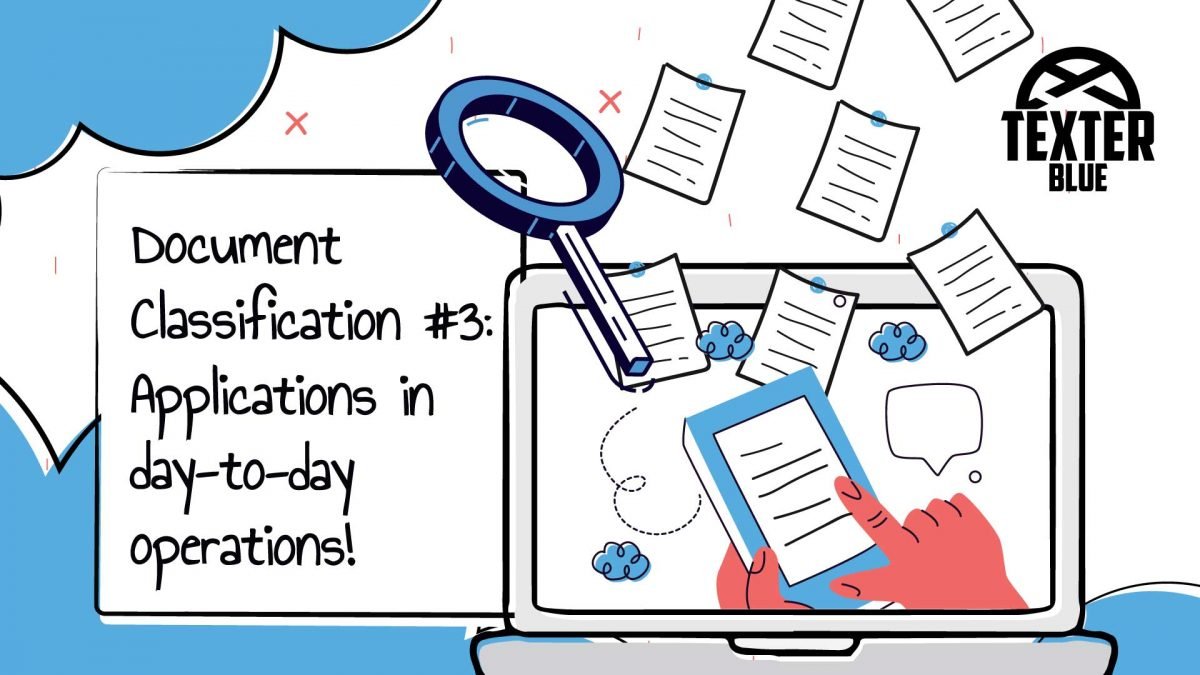In the final part of our article on Document classification, we’ll explore day-to-day applications and use cases. Be sure to read part 1 and part 2!
How does document classification work?
Document classification involves categorizing documents into various categories. This task can be done either manually or automatically.
Manual document classification entails a person reviewing the document and assigning it to a specific category. However, this approach can be both time-consuming and prone to errors.
On the other hand, automatic document classification utilizes Deep Learning algorithms to classify documents into distinct categories without the need for human guidance.
Here’s how the process works, step by step:
- Dataset gathering – Begin by collecting a dataset with enough data points per label. This dataset will be used to train a classification model, which categorizes outputs based on specific inputs and represents the data you want to classify.
- Model training – Once you have a dataset, it’s time to train the model. This step may require time, depending on the chosen tool or method. Training can be done using supervised, unsupervised, or semi-supervised techniques.
- Results evaluation – It’s crucial to assess the performance of your model by comparing the results against your expectations. You can accomplish this by automatically assigning predicted documents to a team member responsible for measuring the accuracy of the predictions.
Overall, document classification is not difficult to start, but it’s essential to invest time in understanding the process. This ensures optimal results.
Applications and use cases for Document Classification
Document classification serves multiple purposes, including sentiment analysis, topic modelling, and spam detection. Some applications and use cases for document classification are as follows.
Content moderation
Content moderation entails identifying and eliminating offensive or inappropriate content. Document classification can automate this process.
By training machine learning models, you can categorize documents into several types, including hate speech, profanity, NSFW (Not Safe for Work), and others. The classified content can be either removed or flagged for further review.
Customer support ticket classification
By utilizing document classification, customer support tickets can be categorized into various categories, enabling efficient routing to the relevant team or department. This expedites issue resolution by customer service representatives.
To begin, a dataset consisting of customer support tickets is required, then a model is trained to classify the tickets effectively.
The AI model evaluates each incoming support request, utilizing the criteria established and leveraging the provided dataset. This process offers streamlined support to customers while saving valuable time to the customer support team.
Conduct completeness checks on documents
Document classification can be used to validate the completeness of documents. This process ensures that incoming documents contain all the essential information required for further processing. It includes verifying complete fields and valid signatures if necessary.
By checking documents for completeness, administrative burdens associated with obtaining client input can be reduced.
The AI model evaluates each document, determining its completeness. If any information is found to be incomplete, alternative actions can be assigned, such as automated reminders to clients about the missing elements of the document.
These examples merely scratch the surface of what document classification can accomplish.
TML: Texter Machine Learning | Supercharge your content with AI!
Your content and data are the foundation upon which your business operates, and critical decisions are made. Recent advancements in AI in areas such as image and natural language processing have enabled a whole new level of automatic extraction of information and data analysis that power the automation of key business processes not possible until now.
- Process your data with different AI engines, integrating the results.
- Supports several data formats: images, video, text, etc.
- Generate new content and document versions based on AI results
- Store extracted information in metadata, enabling further processing and process automation.
- On cloud or on-premises – in case you don’t want data to leave your private infrastructure
- Compatible with several different ECM providers
- Ability to develop custom AI models to target your specific needs and data
Download here our TML – Texter Machine Learning – Datasheet:
By submitting you confirm that you have read and agreed with our Privacy Policy.
If you’re struggling with your digital transformation, remember… you are not alone in this… Texter Blue is here to help you providing the best results! Make sure you read our news and articles and contact us.

